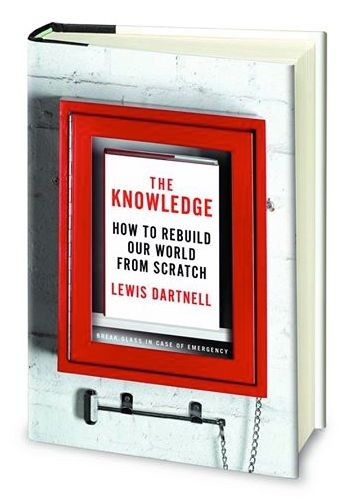How to reinstate global communications
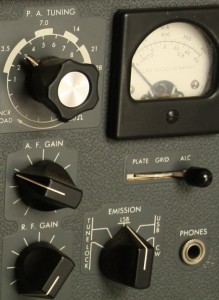 If our modern civilisation ever were to collapse – taking with it global communication technologies like the internet, satellites, cell phones and undersea cables – with the right knowledge it wouldn’t be too hard to reconstruct from scratch the means for communicating around the world. All you need is a radio set not much bigger than a couple of shoe boxes and a wire antenna strung between two trees. And the basic building block for electronics and reinstating long-distance radio communications, but still something you could build yourself, is the triode vacuum tube. Here’s how…
If our modern civilisation ever were to collapse – taking with it global communication technologies like the internet, satellites, cell phones and undersea cables – with the right knowledge it wouldn’t be too hard to reconstruct from scratch the means for communicating around the world. All you need is a radio set not much bigger than a couple of shoe boxes and a wire antenna strung between two trees. And the basic building block for electronics and reinstating long-distance radio communications, but still something you could build yourself, is the triode vacuum tube. Here’s how…
Guest post by Allen Hundley
A triode vacuum tube has three basic components: a cathode, a plate and, between the two, a thin winding of wire called a grid. The cathode filament is heated up by a low voltage so that it gives off a pale soft glow. In the process, electrons are thrown off the metal cathode and into the surrounding area. Apply a high, positive voltage – several hundred volts, say – to the plate and electrons will jump from the hot cathode to the plate. The key step is to use the thin winding of wire – the grid – to actually control that electrical current. Electrons are negatively charged so if you apply a negative voltage to the grid then the electrons are repelled and few, if any, make it through to the plate. But if you apply a positive charge to the grid then the electrons will flow in a rush to the plate to complete the circuit.
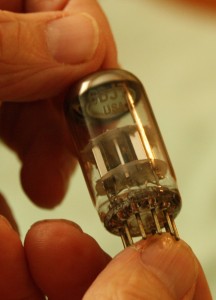
This is the whole basis of electronics. Like the accelerator pedal controlling a powerful car engine, a small charge on the little wire grid can control a much greater amount of energy trying to flow through the tube. Select the electrical values of the components in the circuit and how they are connected and you can harness this effect to make an audio amplifier, which takes a small electrical signal from a microphone and makes it much stronger so that it can drive a set of speakers.
Tweak the electrical values and you can turn the circuit into a radio frequency amplifier. This allows an otherwise weak radio signal that would only be picked up locally to be amplified so that now it can be detected by a radio receiver thousands of miles away.
Triode tubes can also be wired in such a way as to create the high-frequency oscillations of the radio carrier wave itself, which is then amplified and transmitted across the world. Triodes are the basic building blocks of all radio circuits, whether in the transmitter or the receiver. And vacuum tubes are relatively simple tech – they date from the early 1900s and can feasibly be constructed yourself from scratch (Watch this captivating video of Paillard Claude doing just that).
Today we have solid state transistors that still have three components, just like triode vacuum tubes, but don’t use a heated cathode and exploit a slightly different principle to offer exactly the same function as a vacuum tube triode. The problem with modern transistors and other solid state components is that although energy efficient, they are impossible to fabricate or even repair yourself. Sometimes critically important chips stop being manufactured only a few years after the radio is released and without those parts it is very difficult – if not impossible – to repair the equipment.
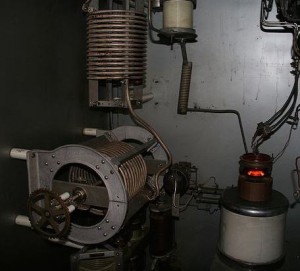
The reason I got involved with ham radio back in the early 1960s was to be able to exchange ideas with people overseas, to find out about their life and culture. As soon as I got my FCC license I started using a little five-tube transmitter built from a kit. The first station I contacted was located in the Falkland Islands near the southern tip of South America. That’s over 6,000 miles from where I was in Richmond, VA. I’ve also recently restored a slightly more complex, 18-tube radio set from 1965. Astonishingly, after 40 years the tubes still all worked fine and all I needed to do was replace a few capacitors (which can themselves be easily constructed by hand). I finished the repairs at 1 AM and was keen to test it immediately. I turned the radio on and the first ham operator I made contact with was located near Perth, Australia – a distance of more than 10,000 miles!
The bottom line is that if you can create electricity and triode tubes you have the capability for radio communications right around the world. The fundamentals of generating electricity are covered in The Knowledge. For vacuum tubes you need tungsten for the filament, glass for the tube enclosure, a gas like acetylene to cut and seal the glass shut once the small metal components are installed inside, and a vacuum pump to remove the air from the tube. A very effective vacuum pump can be constructed by simply allowing mercury to drain out of an airtight glass container, leaving a void behind it.
So with the right application of knowledge, a global communications network can be reinstated using electrical components that are relatively easy to make yourself.
Allen Hundley lives in Waterville, Maine, and is a ham radio operator on the 20 meter band; his call sign is K5ABH. He is host of ‘The Next Chapter’, which is broadcast on shortwave by WBCQ using vacuum tube transmitters, and reaches across North America, Europe, and parts of the Pacific. A 40 minute interview about The Knowledge was transmitted around the world on the evening of 28th May using this marvellous equipment. To read more about how to exploit electromagnetism for communication and POW radio sets built from scavenged junk see Chapter 10 of the book.
Also explore:
-
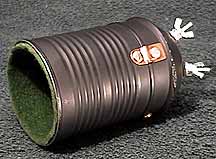
A headphone made from an old tin can, scrap magnets and coils of wire wound upon cardboard spools. H.P. Friedrichs - WBCQ and Radio Caroline
- The Heathkit Virtual Museum of electronics kits
- “The Voice of The Crystal” and “Instruments of Amplification” books by H. P. Friedrichs explain in exquisite detail how to build a crystal-detector or vacuum-tube radio from absolute scratch, including how to make a tin-can headphone (right)

